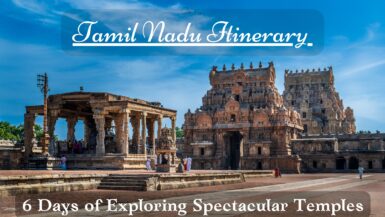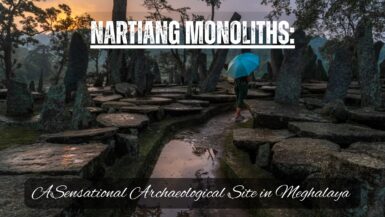“…a teardrop on the face of eternity.” – Rabindranath Tagore on Taj Mahal.
Umpteen words have been splurged by poets, writers, and laymen to describe the beauty of the Taj Mahal since its construction was completed in the 17th century. Yet, mere words can hardly contain the magnificence of this vision in white. Likewise, it has continued to draw zillions of visitors since time immemorial and has enchanted every one of them equally.
For the last few years, the night viewing of the Taj Mahal during the Full Moon has started to provide visitors with a different avatar of this monument. The marble-made mausoleum glistens under the soft moonlight and thus makes an unforgettable view.

Table of Contents
Where is Taj Mahal Located:
The Taj Mahal is situated on the right bank of the Yamuna River in Agra, Uttar Pradesh.
History of Taj Mahal:
The Taj Mahal was commissioned by the Mughal Emperor Shah Jahan in 1631 CE in memory of his beloved consort, Mumtaz Mahal. It is the final resting place of the Empress, who passed away in childbirth in the same year. It also houses the tomb of the Emperor himself.
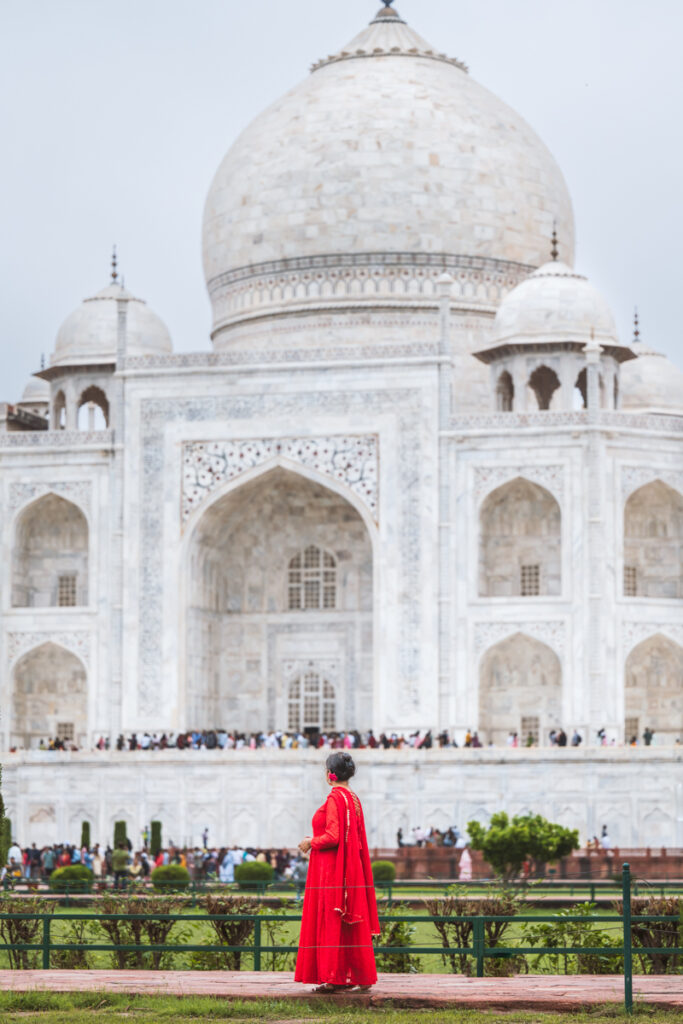
The construction of the Taj was the handiwork of around 20,000 artisans who worked under the guidance of Ustaad Ahmad Lahori, the Emperor’s chief architect. The material used for its construction was white marble. The building commenced in 1632 CE and ended in 1653 CE. It was built at an estimated cost of INR 32 million, which at present will amount approximately to INR 35 billion.
Described as ‘rauza-i-munawwara’ or illuminated tomb by Abdul Hamid Lahori, the Taj Mahal is regarded as the finest specimen of an Indo-Islamic form of architecture. Regarded as one of the Seven Wonders of the World, it was declared a UNESCO World Heritage Site in 1983. Every year, its ethereal beauty attracts millions of visitors from every corner of the world.

Night view of Taj Mahal:
While sunrise and sunset are considered to be the ideal times for experiencing the Taj Mahal, the night view of the pristine monument on Full Moon days is undoubtedly unique. It was started by the Archaeological Survey of India (ASI) on 28th November 2004. We will discuss the important information on the night view of Taj Mahal below.
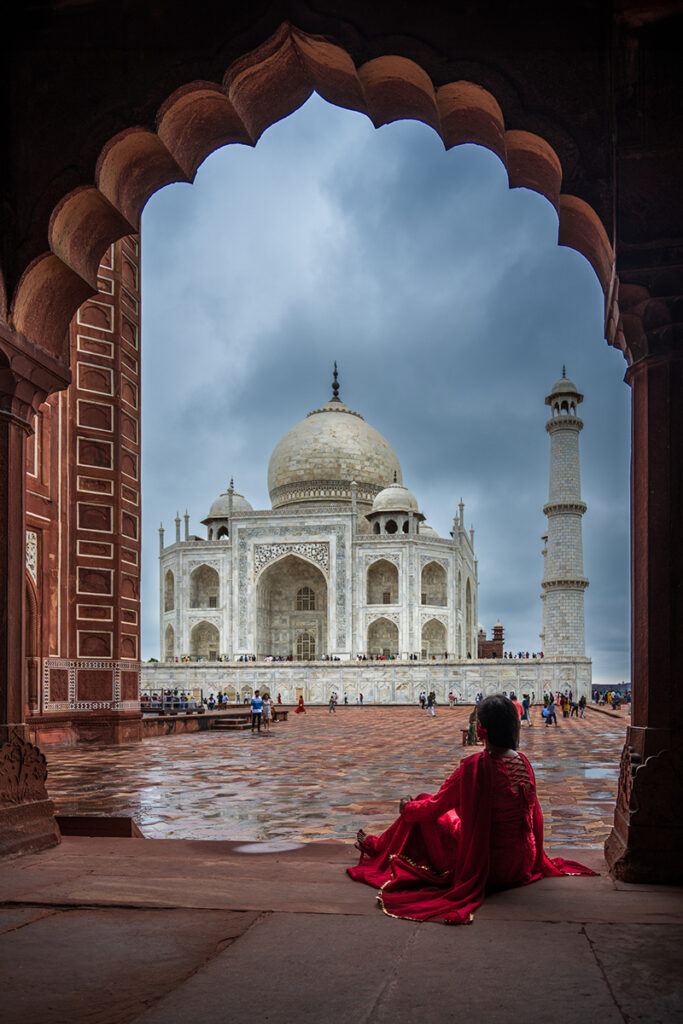
Important FAQs regarding night view of Taj Mahal:
When can I enjoy the night view of Taj Mahal?
Night viewing of the mausoleum is allowed for five nights in a month, which includes the Full Moon night itself, and two days before as well as two days after the Full Moon Night. However, as per the Court order, night viewing remains closed on Fridays as also during the month of Ramzan.
2. What are the timings of night viewing of the Taj Mahal?
The night viewing begins at 8-30 PM and continues till 12-30 PM.
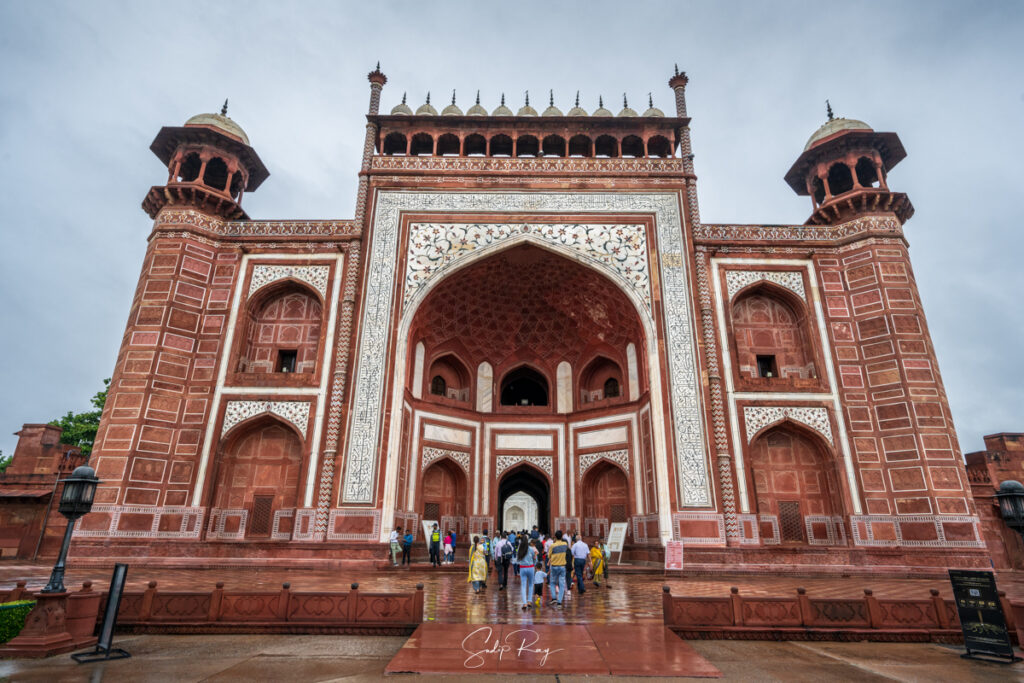
3. What is the duration of this night viewing?
The duration is strictly 30 minutes. The ASI allows 8 batches of 50 persons on each designated night for half an hour.
4. What are the rates for night viewing tickets?
For Indians (adults), the ticket price is INR 510, for foreigners (adults) INR 750, and for children (both Indian and foreign above 3 years up to the age of 15) INR 500.
5. What are the documents necessary for purchasing the ticket?
For Indians, photocopies of address proof and ID proof are mandatory. Whereas, foreign visitors are required to furnish photocopies of their passports.
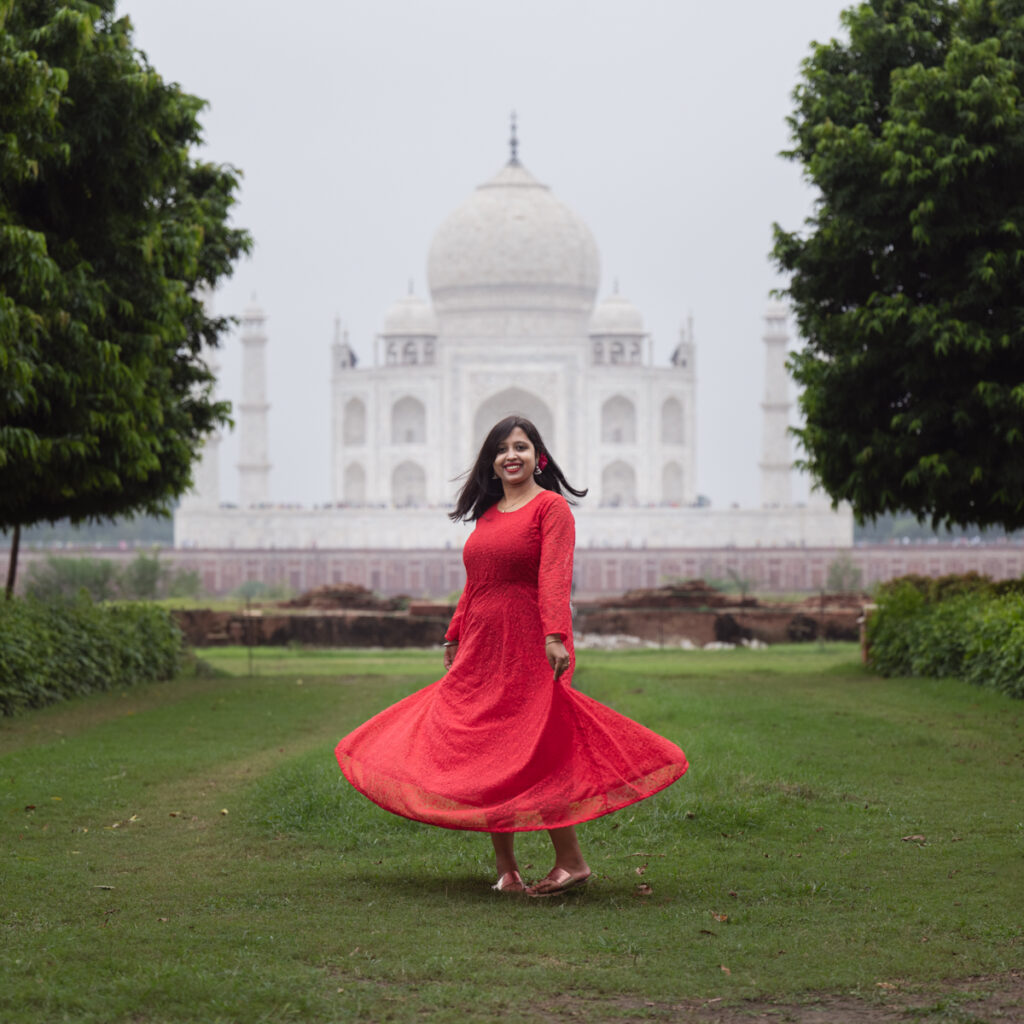
6. How can I purchase the ticket?
The tickets for night view of Taj Mahal can be purchased from the booking counter of the ASI at 22 The Mall, Agra between 10 AM to 6 PM one day before the intended date.
Recently, the ASI has started a hassle-free online ticket booking system for the night view. You can book your tickets from here.
7. Can I cancel my night tickets?
Yes, you can cancel your night tickets. You need to visit the same booking counter of the ASI on the same date of viewing within 12 PM. The cancellation charge is 25% of the ticket price.
Please note that the ASI does not take responsibility for inclement natural conditions that might hinder night viewing and no refund is available for the same.

8. How can I report for night viewing?
You need to report 30 minutes prior to the actual viewing time at the Shilpagram complex. Entry is allowed only from the Eastern Gate. You have to undergo a thorough security check before admission inside. We suggest going at least 45 minutes before as security checking and disposal of baggage take time. After your security checking is done, and documents and tickets verified, you will be escorted by police officials to the Taj Mahal in battery-operated vehicles.
9. What items are prohibited in the Taj at night?
You are not allowed to carry the following items for the night viewing:
- Mobile Phones (Yes, it may shock you but mobile phones are strictly no-no during the night. We found the restriction welcoming as flashes or illuminated screens of mobile phones will surely hamper the entire experience).
- Drones
- Tripods of any kind. Even, the tripod of GoPro is also not allowed.
- Video Cameras.
- Batteries.
- Any metal items such as keys.
- Food.
- Torch.
- Smoking items, intoxicants, gutka, and the like.
- Mikes and headphones.
- Weapons.
- Large bags.
We suggest carrying the bare essentials such as money and drinking water with you.

10. Are there any locker facility available?
Yes, secured locker facilities are available at the security checking counter. You can safely deposit your bags and other items (even mobile phones) here.
11. Are cameras allowed inside the Taj Mahal during the night?
Cameras, both DSLR and Mirrorless, are allowed for night viewing. GoPro is allowed but without the tripod.
12. How can I know about the dates of the night viewing beforehand?
Check the calendar for the dates of the Full Moon. You can confirm the dates from the office of the Superintending Archaeologist, ASI, Agra by sending an e-mail to circler.asi@gmail.com as well as calling 91-562-2227261, 2227263, and 2227262.
Furthermore, the ASI issues the intended dates of the Full Moon through a circular. You can check the dates of the 2023-24 calendar year here.
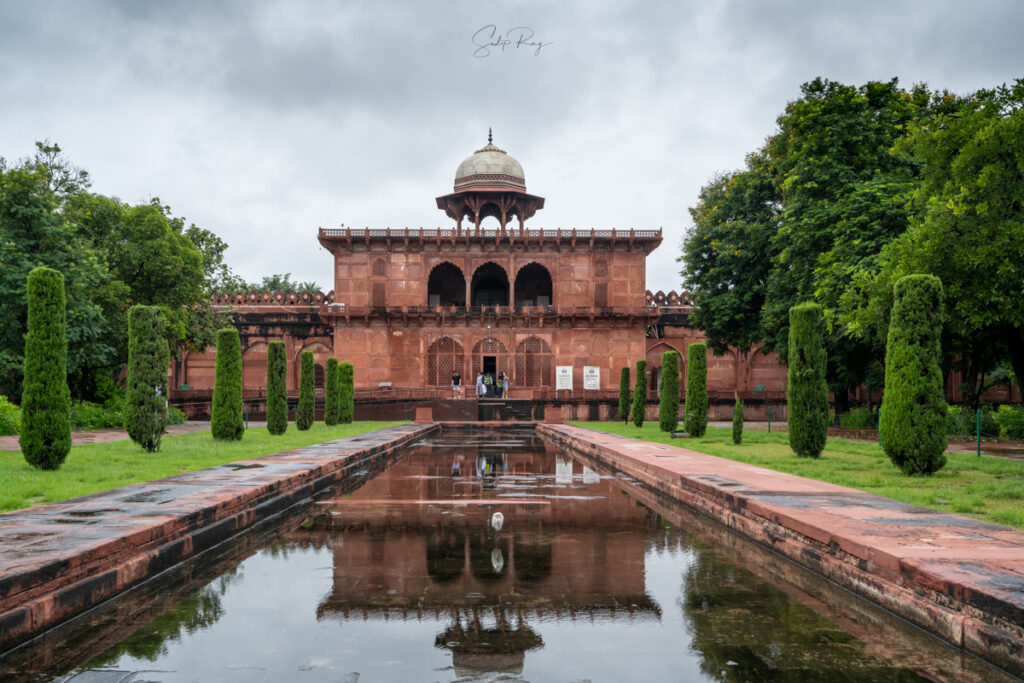
Our experience of the night view of Taj Mahal:
We had booked our night viewing tickets one night after the Full Moon in October. Unfortunately, our luck had run out and our visit to Agra coincided with incessant rainfall courtesy of the retreating monsoon. Neither did we experience the Taj during the sunrise nor the sunset. For two straight days, the weather remained gloomy and the sky poured.
We had the 9 PM slot booking. It was still drizzling and we had no hope left for this anticipated escapade. The security checking went smoothly and we deposited the camera bag at the locker. Thankfully, the rain had stopped entirely by the time we boarded the battery-operated vehicles.
There was another round of frisking before entering the main complex. We were requested by the police officials to maintain complete silence. Later, we were escorted to the viewing platform specifically meant for the night. You cannot see the Taj closely at night and have to observe it afar from the podium at the entrance.
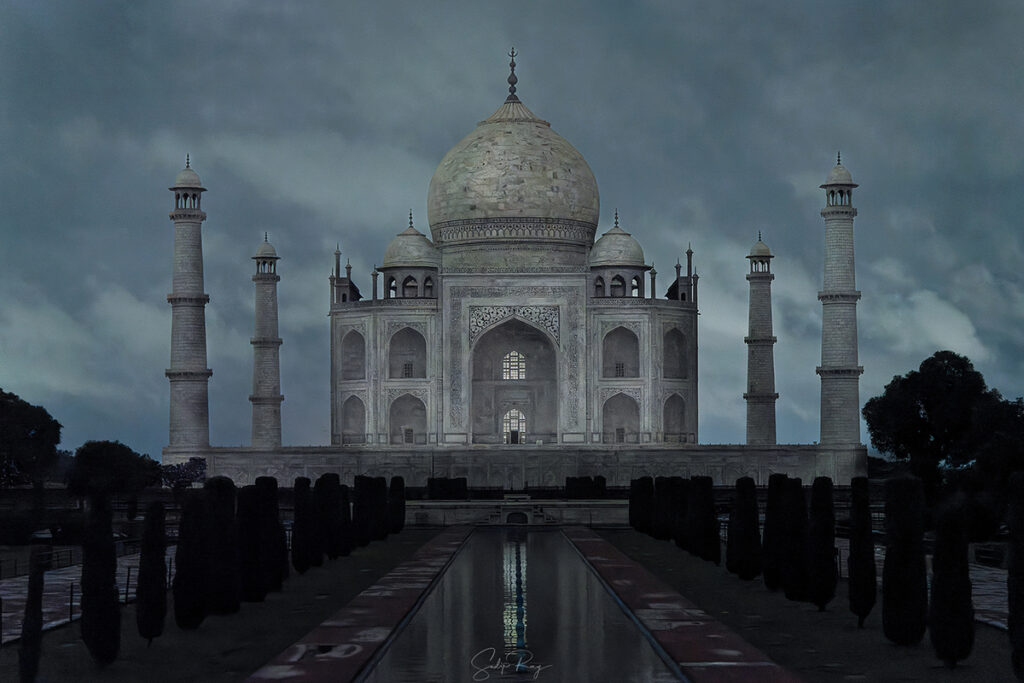
True, the Full Moon remained shrouded by the clouds and we could not get a glimpse of the heavenly Taj Mahal glistening under the moonlight. Nonetheless, the sight before us still took our breath away. The silhouette-y appearance of the Taj against the backdrop of a cloudy sky seemed transcendental. The scene unfolding before us looked straight out from the crinkled pages of the Arabian Nights – a magical monument appeared in a flash on a Full Moon night to tell the tales of the past. The sudden flashes of lightning turned the scenario more enthralling.
The cloudy night view reaffirmed our opinion of the Taj Mahal. It doe not matter whether it is day or night, sunrise or sunset, sunny or cloudy, summer or winter; the monument, celebrated as a symbol of love, looks resplendent in every situation. Every circumstance turns trivial before the magnificence of the Taj Mahal.
Our verdict on the night viewing of the Taj Mahal:
The night view of Taj Mahal is certainly an unparalleled experience. The nightscape of the Taj looks phenomenal. The ambience is utterly contrasting compared to the daytime. In the daylight, with thousand and thousand of visitors pouring in, it often becomes nearly impossible to feel and understand this poetry on marble. But, at night, you get the Taj nearly all to yourself. The darkness adds a mystical aura to the haunting beauty of the Taj Mahal, and you get a lifetime opportunity to lend an ear to its whispers.

All in all, if you are planning to visit the Taj Mahal in the near future, check your calendar for the Full Moon and fix a date with the Taj under the big bright moon. The night view of Taj Mahal will definitely be etched in your memories forever.

